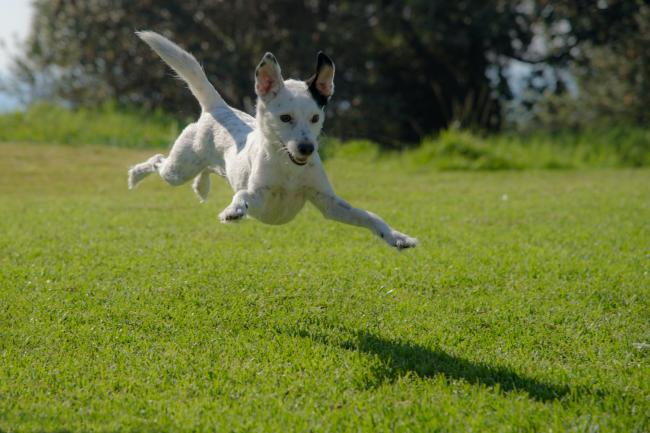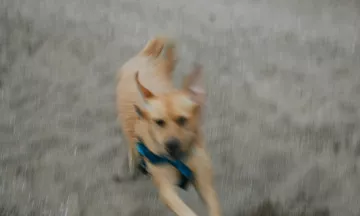Dog Park Introductions
Embarking on a trip to the dog park is an exciting adventure for both dogs and their owners. A seamless introduction to a new dog park requires strategic approach. This guide is for everyone and provides detailed advice to make your dog's first visit safe, fun, and memorable. It will help your dog socialise positively and offers practical tips for all levels of experience.

To Leash or Not to Leash?
Your dog's comfort level and the park's own regulations will limit your decision to leash your dog. While some dogs thrive off-leash, others may find security tethered to their owner. Being aware of other dogs' leashes is also important to avoid conflicts and have a peaceful park visit with your dog.
For dogs accustomed to off-leash play, the dog park is a haven of exploration and socialisation. Though, some dogs may initially feel more secure on a leash. Particularly when in a new environment with new scents and unfamiliar canine friends. Before deciding to introduce your dog on or off-leash, it's important to evaluate their temperament and comfort level.
Before removing the leash, it's a good idea to assess if your dog has good recall, focus, and how they socialise with other animals. You need to make sure that your dog has the ability to come back to you when called. Additionally, it's important for your dog to pay attention and stay focused on you during off-leash activities. Finally, your dog needs to be friendly with other animals for a safe and fun time.

Allowing Space for Exploration: The Prelude to Dog Park Socialisation
Acknowledging that new environments can be overwhelming for dogs lays the foundation for a successful dog park introduction. Before allowing your puppy to interact with other dogs, it is important to keep them separated from the other dogs. This will give them the opportunity to observe and become familiar with their surroundings from a safe distance.
The entrance of a dog park itself can be a sensory overload for your pup. New scents, the rustle of leaves and the distant sound of other dogs playing can be both exciting and scary. Allowing your dog time to acclimatise is crucial for a successful introduction.
Take a stroll around the outside of the parks fenced areas first. Give your dog the chance to observe the surroundings from a safe distance.
When entering, maintain a loose leash, granting them the freedom to roam and explore at their own pace. This initial exploration is key to creating a positive and stress-free introduction to the dog park environment.
Keep the leash loose to allow them freedom in their exploration and allow your dog to take the lead. This gradual approach will help build their confidence and comfort in the new environment.
Read more about dog park safety here.
Decoding Canine Body Language: The Silent Language of Dog Park Interaction
Paying close attention not only to your dog's body language but also to that of other dogs in the park is essential. Look for signs of curiosity, playfulness, or hesitation. Positive indicators include a relaxed posture, wagging tails, and friendly sniffing, while signs of discomfort may include stiffening, growling, or raised hackles. Understanding this silent dialogue enhances your ability to facilitate a positive and enriching dog park experience.
Positive Indicators:
- A relaxed posture
- Wagging tails at a medium height
- Friendly sniffing
- Playful behaviour, like a "play bow" with front legs lowered
- Relaxed facial expressions
Signs of Discomfort:
- Stiffening of the body
- Growling or showing teeth
- Raised hackles
- Intense staring
- Tucked tail, indicating fear or anxiety
It's essential to remember that not all dogs will communicate in the same way. Some may exhibit subtle cues, while others may be more expressive.
Dog parks are melting pots with lots of variety. You'll come across small dogs, large dogs, young puppies and adult dogs. Knowing your dog's unique body language and being observant as they play is crucial. If you notice your dog becoming discomforted or if the dogs play too roughly, it may be a good idea to separate them.

Intervening Calmly When Needed: Navigating Challenges in the Dog Park
Embracing the fact that not every interaction will be smooth is a crucial mindset for dog park enthusiasts. If you sense tension or observe signs of distress in your dog, calmly call them to your side and redirect their attention. Steer clear of raising your voice or making sudden movements, as these actions may escalate the situation. Having treats ready is useful for distracting and rewarding your dog, creating a calm atmosphere at the park.
Key Strategies for Calm Intervention:
- Calmly Call Your Dog: Establish a recall command that your dog associates with positive experiences. Use this command when you sense tension or discomfort.
- Redirect your dog with treats, toys, or a game to shift their attention from a possibly stressful situation.
- Maintain a Relaxed Posture: Dogs are highly attuned to human body language. If you remain calm and composed, it can have a reassuring effect on your dog and those around you.
- Avoid Physical Punishment: Physical corrections can escalate tension and create a negative association with the dog park. Opt for positive reinforcement to encourage desired behaviour.
Having a well-practiced recall command is invaluable in dog parks. Regularly practicing recall in a controlled environment builds a strong association between the command and positive experiences. This command serves as a lifeline, allowing you to redirect your dog's attention if a situation becomes potentially problematic.
Respecting Park Etiquette: Fostering a Community Atmosphere
It is important to understand that dogs have their own social dynamics. This understanding is crucial for creating a good atmosphere at the dog park - especially with other owners. Be considerate of other park-goers by monitoring your dog's behaviour and promptly cleaning up after them.
Observing the behaviour of other dogs and their owners at the park can help you understand and follow park rules. It also allows you to fit in with the dog park community and contribute to a peaceful atmosphere.
Key Elements of Dog Park Etiquette:
- Supervise Your Dog: Keep a watchful eye on your dog's interactions and behaviour. Intervene when necessary to ensure a positive environment for all.
- Clean Up After Your Dog: Carry waste bags and promptly clean up after your dog. This not only keeps the park clean but also demonstrates consideration for fellow park-goers.
- Monitor Play Styles: Dogs have diverse play styles. Be attentive to how your dog interacts with others and be open to constructive feedback from other owners.
- Don't bring dogs without vaccines. Make sure your dog is vaccinated before taking them to the dog park. This helps maintain a healthy and safe space for all dogs.
Establishing a sense of community within the dog park relies on respectful and considerate behaviour. Just as dogs learn from each other, so do their owners. By following basic etiquette guidelines, you contribute to a positive atmosphere that benefits everyone.

Conclusion: Cultivating a Lifelong Love for Dog Park Adventures
In conclusion, every dog is unique, and their comfort levels may vary. When you are patient, attentive, and positive when introducing your dog to the park, it will help them socialise better.
The dog park is a dynamic space where dogs learn, play, and socialise. To have fun at the dog park means to prepare, understand your dogs behaviours and body language, and build a sense of community.
As you navigate the world of dog parks, remember that learning is a continuous process for both dogs and owners. Embrace the joys and challenges, celebrate the victories, and forge connections within the dog park community.




